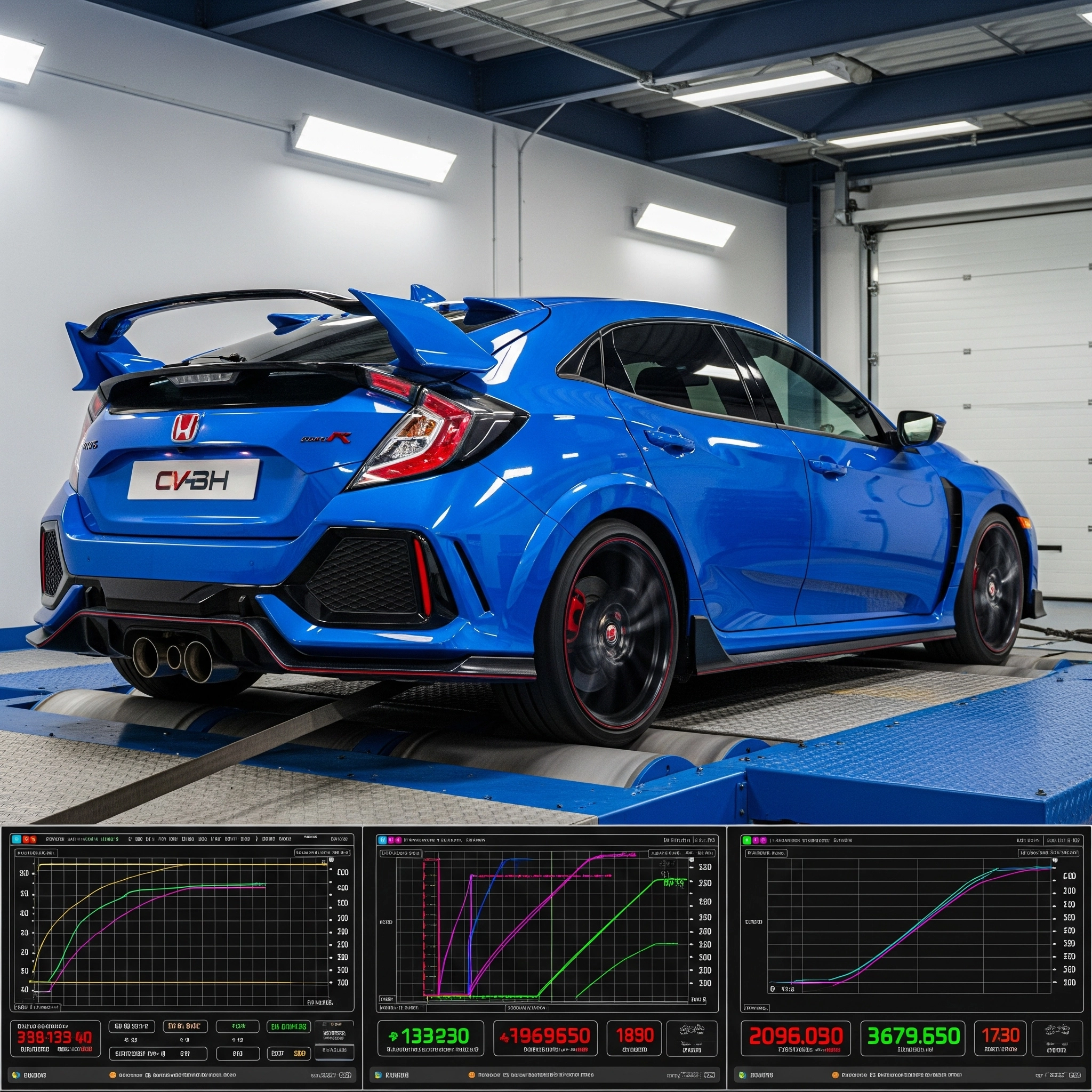Introduction
In the world of high-performance engines and modern automotive tuning, ECU (Engine Control Unit) tuning is a powerful technique used to enhance engine behavior. At the heart of this process lies the Air-Fuel Ratio (AFR) — a critical parameter that directly influences combustion efficiency, power delivery, fuel economy, and emission levels. Fine-tuning AFR enables performance gains while maintaining reliability and meeting environmental regulations. This blog explores why AFR is essential in ECU tuning, how it’s managed, the tools required, and best practices used by professionals.
Understanding AFR: What Is Air-Fuel Ratio?
The Air-Fuel Ratio (AFR) represents the mass ratio of air to fuel in the engine’s combustion process. For gasoline engines, the ideal or stoichiometric AFR is 14.7:1, meaning 14.7 parts of air for every 1 part of fuel.
A rich mixture (lower AFR) has more fuel than needed.
A lean mixture (higher AFR) has more air and less fuel.
Both affect combustion efficiency differently, making precise control essential.
How AFR Influences Engine Performance
1. Maximizing Power Output
Slightly rich mixtures improve power output, especially under high-load or full-throttle conditions, by providing more fuel for combustion. However, overly rich mixtures can cause incomplete combustion, reducing efficiency and increasing unburnt hydrocarbon emissions.
2. Enhancing Fuel Economy
Leaner AFRs (higher than 14.7:1) improve fuel efficiency by reducing fuel usage. But excessively lean mixtures can lead to engine knocking, increased combustion temperatures, and potential component damage, particularly in high-performance or turbocharged engines.
3. Controlling Emissions
Maintaining a near-stoichiometric AFR is essential for optimal catalytic converter performance, which minimizes emissions of NOx, CO, and unburned hydrocarbons. Even small deviations can affect emission compliance and overall environmental impact.
AFR Management in ECU Tuning
1. Closed-Loop vs. Open-Loop Operation
Modern ECUs use oxygen (O2) sensors for real-time AFR control:
Closed-loop mode: Actively adjusts fuel injection based on O2 sensor feedback to maintain desired AFR, especially during light-load or idle conditions.
Open-loop mode: Used during high-load or full-throttle situations, relies on pre-set fuel maps without sensor feedback.
Expert tuning balances both modes, ensuring optimal performance under every driving condition.
2. Fuel Mapping Adjustments
Fuel maps define how much fuel is injected at various engine loads and RPMs. Tuning these maps allows control over AFR, helping meet specific goals:
Power optimization
Fuel efficiency
Emissions compliance
Advanced tuning software enables real-time visualization and editing of these maps for precision control.
Essential Tools for Accurate AFR Tuning
To achieve optimal AFR settings, precision tools are a must:
Wideband O2 Sensors: Provide accurate AFR readings across a wide range, crucial for open-loop and performance tuning.
Dynamometers (Dynos): Simulate real driving conditions in a controlled environment to monitor AFR under different loads.
Data Logging Software: Records AFR trends along with engine parameters, enabling detailed analysis and iterative tuning improvements.
Expert Recommendations & Best Practices
✅ Baseline Readings First: Begin by recording current AFRs under varied loads, RPMs, and throttle positions to detect irregularities.
✅ Tune Incrementally: Make small, calculated changes to fuel maps, closely monitoring the effect on AFR and engine behavior.
✅ Watch for Warning Signs: Monitor exhaust temperatures, knock sensor data, and throttle response. Unexpected changes may indicate issues with AFR settings.
✅ Stay Within Legal Emissions Limits: AFR adjustments must align with local emissions standards to avoid legal penalties and engine failures.
Risks of Improper AFR Tuning
| Potential Risk | Cause | Effect |
|---|---|---|
| Engine Knock or Detonation | Too lean AFR | Engine damage, piston failures |
| Excessive Fuel Consumption | Too rich AFR | Poor mileage, carbon build-up |
| High Emissions | Incorrect AFR | Failing emission tests, legal non-compliance |
| Catalytic Converter Failure | Rich or lean conditions | Inefficient emissions reduction, costly repairs |
| Power Loss | Miscalculated AFR adjustments | Inconsistent or reduced engine performance |
Conclusion: Mastering AFR for Peak ECU Tuning
Air-Fuel Ratio tuning is not just a technical adjustment—it’s the cornerstone of precision engine performance, efficiency, and longevity. When managed correctly, AFR tuning enhances acceleration, reduces fuel waste, and ensures cleaner emissions. By using accurate tools and following expert best practices, tuners can safely push engines to their limits while respecting legal and environmental boundaries. Whether you’re a weekend warrior or a professional tuner, mastering AFR tuning is essential for unlocking your engine’s full potential.



